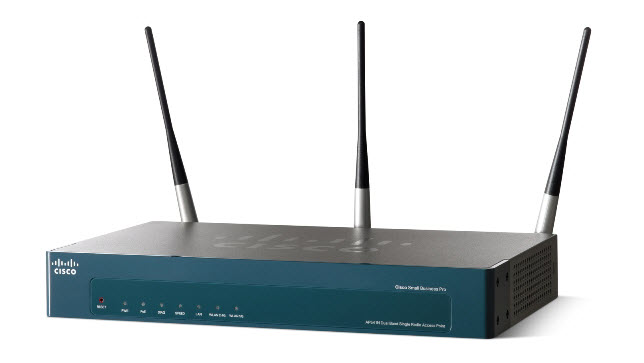How to integrate wireless with your fixed networks
Integrating wireless with your LAN networks

For many businesses the backbone of their day-to-day operations is their installed Ethernet local area network (LAN). It's a well understood and robust technology, and Ethernet networks have continued to develop over the years improving their efficiency and allowing businesses to manage the data they have effectively.
However the use of mobile devices such as smartphones, tablets and other bring your own device (BYOD) technologies has meant businesses have had to shift to a more complex hybrid network that offers both fixed and wireless connectivity. While this 'consumerisation' of technology - with employees increasingly demanding the ability to use their own wireless devices in a working environment - is helpful to employees, unfortunately it also brings in a slew of new problems, support issues and security issues and it's not going to go away.
WLAN and LAN integration
Currently the vast majority of data connections in your business are via a traditional Ethernet, but Gartner expects that by the end of this year around 70% of networks will have wireless LAN ports. Indeed, the Aberdeen Group report that over 50% of businesses intend to upgrade their LANs to cope with the growth of data usage within their enterprises, with these upgrades being wireless.
What this means in practice is that the addition of wireless LANs need to be on your business' IT development roadmap. Your roadmap should include these checkpoints:
- An evaluation of your existing data usage and how this is likely to expand in the short term.
- The demand by employees to use wireless mobile data devices in and outside of your offices.
- An appreciation of how security across your business' network will need to be improved within your office space and in the field via a VPN.
- The integration of wired and wireless access needs to be seamless as data transmissions move over your business' entire network.
- Legacy Wi-Fi networks will need upgrading to ensure that bottlenecks are minimised.
- Security protocols must be comprehensive enough to cater for wired and wireless access.
Often, your business will have a legacy LAN system that needs to be either augmented or completed upgraded. The key to a successful upgrade is to plan carefully. Audit your existing systems. Look at building expansion capability into you new LAN environment, and always ensure that security issues are front and centre of your business' planning.
Create a plan of action for your network integration
Most businesses will already have some form of WLAN in existence usually employing an older Wi-Fi protocol but before you attempt to upgrade you need to consider how this will impact on the existing LAN.
Upgrading a WLAN to 802.11n will need more network bandwidth and will also impact on the wireless controllers that are already in place. In addition, businesses that have satellite offices that at the moment use a centralised LAN/WLAN would find that installing autonomous access points would vastly improve the efficiency of these network connections.
Are you a pro? Subscribe to our newsletter
Sign up to the TechRadar Pro newsletter to get all the top news, opinion, features and guidance your business needs to succeed!
And where security is concerned there a number of approaches your business could take. Some businesses will integrate their security for their Ethernet and WLAN systems. Others prefer to divide their networks and have completely isolated systems for their security.
The advice is to look for vendors that can at least provide a level of integration with the network security your business is looking for. Companies that have WLAN security systems available include:
- AirTight [SpectraGuard Enterprise Wireless IPS]
- Cisco Intrusion Detection System
- Dell's SonicWall Unified Threat Management System
- FortiGate
A holistic approach will ensure your business not only chooses the right upgrades for its networks, but also ensures that the security in place is fit for purpose. It's important to look at your business as a whole and not simply focus on the security issues that tablet PCs and smartphones present.
Troubleshooting should also be an essential component of your business' LAN/WLAN arrangements. As your network becomes more complex, interference could become a major issue. Being able to track down the source of the interference becomes vital to the efficiency of the integrated network your business has deployed.
How your business priorities the data that moves over its networks is also critical to get right. For example, VoIP requires a high bandwidth to deliver the video and voice packets. It's advisable to place these services on their own access point.
Voice data can be given more priority to ensure the connections are strong. It's advisable to use WMM or Wi-Fi Multi Media to map the data types moving over your network. These data types can then be categorised and priority given to ensure the bandwidth that is available is used efficiently based on your business' particular data usage.